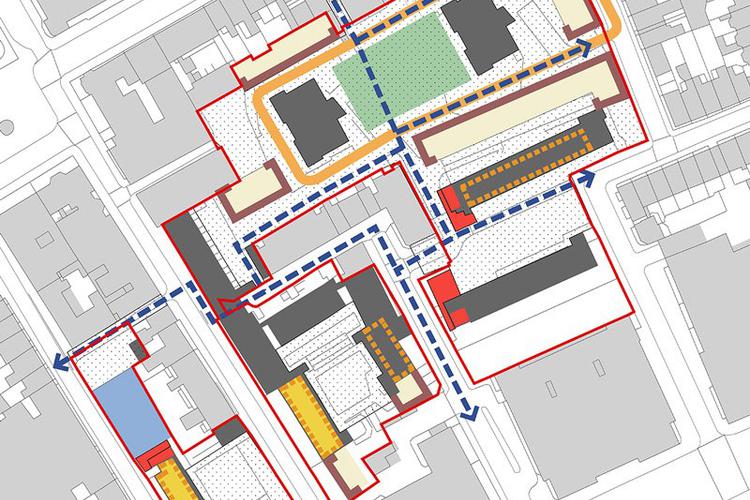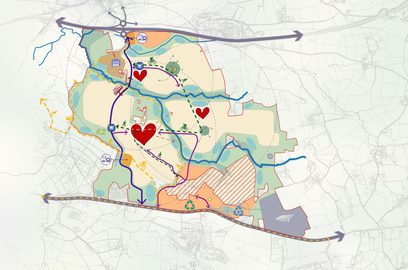What makes Tibbalds good at estate regeneration?

Tibbalds

As cities face an increasing pressure to significantly increase housing supply over the next few years, it is clear that the success of this delivery will depend on balancing the provision of sustainable and flourishing communities within high-density masterplans.
This priority will inevitability require the review of all options for housing provision, such as urban extensions, brownfield regeneration and estate regeneration.
Masterplanning in central London, for estate regeneration projects is extremely complex. There are many layers of technical, financial, planning and design issues to bring together and these must all happen with the added challenge of introducing significant personal change in people’s existing homes, community and social network. This, of course, cannot be taken lightly and requires a design team with strategic and technical capabilities, but with human sensitivity and the ability to listen and communicate effectively.
Tibbalds is experienced in working in this challenging environment and committed to making places work better for the people who inhabit them. We do this by targeting the following issues:
1. Strategy
(Why)
We always ensure that a strategic approach is at the heart of what we do. Driving forward focused or detailed project work, without a clear purpose, output or process means that work can become abortive or not deal with wider or future issues. This is particularly the case in estate regeneration when residential blocks are part of a large portfolio, and sit within various policies and plans on a local and national level.
(How)
We work with the client to establish a thorough brief; getting to the bottom of why a project is taking place and the key targets and principles that underpin it. We also look at the different factors that impact deliverability, viability, design and planning to ensure that key issues are highlighted and risks mitigated from the start.
2. Leading teams and project management
(Why)
The success to any project is marrying up a sound strategic approach with the specialist expertise of an often large design team. Tibbalds has the understanding of the critical issues that impact these specialist design processes to know when to ask the right questions at the right time and how to get the team on board.
We also know that a happy team will create the best work and so we are committed to providing clear briefing, a collaborative dialogue and realistic deadlines to support the detail design work of the architects, engineers and other consultants.
(How)
The Tibbalds team typically has a background in architecture, surveying, sustainability or planning, and so is able to use this experience to understand the needs of the team. The coordination and programming of the design team is done so that every consultant has the information they need, as well as the opportunity to communicate when issues arise.
We lead regular meetings for the design team in person and encourage speaking on the phone when needed; as talking through issues tends to solve problems most quickly!
3. Embedded planning
(Why)
Most estate regeneration projects are on sites that are subject to a lot of planning policy requirements. By placing planning at the backbone of the process, it ensures that design work will be designed within the right parameters and policy context from the get go. We also know that planning comes hand in hand with politics and that these two issues must be understood carefully in all projects.
(How)
Many of the Tibbalds team are urban planners, dealing with all stages of the planning process. This in-house expertise means that we are able to adapt to, discuss and challenge policy (where appropriate), particularly in the context of London where policy is changing fast.
4. Design and delivery
(Why)
Making places better for people means clearly understanding the project brief and technical issues, but also making sure that high quality design is produced. This means making places that look great from the moment they are built, but which look better and better as people inhabit and occupy them.
(How)
In estate regeneration, when budgets are often tight, it is essential that high quality design is locked in to the parts of the scheme that really make a difference. It also means making sure that buildings are robust and low maintenance to give them longevity and sustainability. Most of all, the residents need to really like them; proud residents who feel part of the process will be the keepers and protectors of their new neighbourhood.
5. Relationship Building and Emotional Intelligence
(Why)
The truth is that good things come from good relationships and in estate regeneration there are a lot of different people involved in the process. Whether it be the leader of the council, the resident of 43 years, the planning officer, the client, the heritage consultant, the structural engineer or the intern, every relationship counts.
(How)
Tibbalds know that by always putting people first, and by understanding their needs and issues, we are far more likely to succeed in really good place-making, no matter how challenging the brief.
Related Updates

Marlcombe, East Devon selected as one of the New Towns

Tibbalds

Lizzie Le Mare attending LREF 2025

Tibbalds
Newham Council’s 50% affordable Carpenters Estate regeneration gets underway

Tibbalds
Stay In Touch
Sign up to our Newsletter
Subscribe to our newsletter to receive updates about making people friendly places.